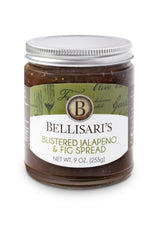
Long before the potato became a national favorite, the Irish were lovin’ their bread! And frankly, nothing much has changed. There's usually always a brown soda bread loaf with butter and jam and a nice pot of tea, to fill the hunger gap in most Irish homes – a generational tradition that has never lost its charm or appeal.
Bread has a long-standing history, shaped by cultural movements in Ireland over the centuries. The first bread of the Gaelic Irish was actually a simple rustic oatcake. Oatcakes are still traditional in Northern Ireland, made a regional speciality in Castledawson and Magherafelt.
The Anglo-Normans brought wheaten bread when they settled in Leinster and Munster in the 1100s. Later on, refined flours became the symbol of the wealthy, while rural communities still used wholemeal brown flour for their homemade loaves.
It wasn’t until after the Great Famine and the loss of potatoes that bread became the main staple again in Ireland. Baking bread became prevalent in every home and saw some great developments in bread styles. Soda bread became popular, made with white or brown flour. Its popularity was probably due to it being a cake style yeastless bread which was quick and easy to make every morning by the lady of the house. Sometimes dried fruits, treacle (a thick, sticky dark syrup made from partly refined sugar; molasses) or eggs were added for richness and sweetness. Fruit sodas were also known as Spotted Dog – an old-fashioned pudding style bread that has fortunately been resurrected.
Soda bread is still a huge favorite in Ireland, often featured on the breakfast tables of their wonderful culinary accommodations. It’s still baked fresh every morning in the old fashioned way. In the past decade though, the upswing of small craft bakeries has also seen the introduction of yeast and sourdough bread from other parts of the world. Ireland is now internationally aware when it comes to bread! But even so, the bread that epitomizes this nation is the simple well-loved soda bread.
MAKE YOUR OWN BREAD FOR SAINT PATRICK’S DAY (*You can find loads of recipes online, but here’s an easy link for these. https://www.tasteatlas.com/most-popular-breads-in-ireland)
Conger Bread
Conger bread is an Irish bread originating from Galway. This visuallyattractive bread is stretched across the length of the counter everyday. This huge loaf of sourdough is shaped like a giant conger eel that almost killed the baker who came up with this recipe.
This bread roll was awarded a Protected Geographical Indication status by the European Commission in 2013. Blaa is a standard breakfast stale, usually enjoyed plain or buttered, but it also makes for an excellent midday snack, when it is traditionally accompanied by various fillings and serves in a sandwich form.
This rustic bread is baked until the loaf sounds hollow when tapped on the bottom. The cross on top of the bread has its purpose – the heat will penetrate it, and the center will then bake well. In the country, this bread is a staple in pubs and restaurants, and it's often paired with Irish butter and fruit jam.
Soda Bread
Although soda bread has been known for centuries and was first invented by Native Americans, it was not until the 19th century that this type of bread became commonplace in Ireland. As a result of the potato famine, as well as Ireland weather and geographical conditions, which allowed only the production of soft wheat that had low protein content, the Irish turned to soda bread as their main source of nutrition.
There are only a few ingredients needed to make the bread; flour, salt, baking soda, and buttermilk, but some recipes may also include olive oil and eggs. This bread requires almost no kneading, and the dough is shaped wither as a round cake, or it is flattened and cut into four pieces, known as farls.
This year, why not put a Bellisari’s twist on your traditional Irish bread recipe? Happy baking from all of us at Bellisari’s!
Irish Brown Bread
Ingredients:
Unsalted butter, room temperature, for pans
2 ¼ cups all-purpose flour, plus more for pans
½ cup unsulfured molasses
¾ cup hard dry cider (such as Angry Orchard Stone Dry)
3 packages (¼ oz. each) active dry yeast (21 grams)
2 ¼ cups coarse wholemeal flour (King Arthur)
4 tsp. kosher salt
Directions:
Butter two 8-1/2-inch by 4-1/2-inch loaf pans. Dust with all-purpose flour, tapping out excess.
In a small saucepan, combine molasses, 1 cup water, and cider. Heat over medium, just until mixture reaches warm room temperature. Sprinkle yeast over top and let stand until yeast is bubbly, about 5 minutes.
Combine flours and salt in the bowl of an electric mixer fitted with a paddle attachment. Beat to combine. Add the yeast mixture and beat on medium until well combined, 2 to 3 minutes. Cover with plastic and place in a warm spot until doubled in size, about 1 ½ hours.
Divide dough between prepared pans. Drape with plastic wrap and let stand until doubled in size, about 1 hour more. Meanwhile, preheat oven to 350° F with a baking sheet on lower rack. Transfer loaves to oven, being careful not to deflate. Bake 30 minutes.
Remove bread from pans and place on preheated baking sheet. Continue baking until hollow-sounding when tapped on bottom and an instant-read thermometer reads 190 to 200 degrees, about 30 minutes more. Transfer to wire racks to cool completely. Loaves will keep in an airtight container at room temperature for up to 3 days.
Serve with Bellisari’s Blistered Jalapeno & Fig Spread, our new Harvest Ginger Peach Spread or Bellisari’s Blue Cheese Honey & Shallot Spread and an Irish butter.






